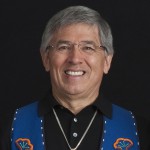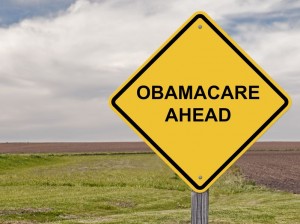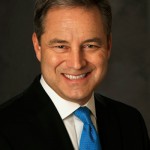 Cutting government budgets is always difficult. There are always lots of needs, lots of government programs and services. And all of these needs, programs and services have constituencies. And all of these constituencies have a legislator or three who share their values and concerns. This is why government budgets are difficult to cut.
Cutting government budgets is always difficult. There are always lots of needs, lots of government programs and services. And all of these needs, programs and services have constituencies. And all of these constituencies have a legislator or three who share their values and concerns. This is why government budgets are difficult to cut.
And it’s really hard to cut the budget when oil prices are sky high and revenues are gushing into our state coffers. In 2004, the state’s share of the operating and capital budget was about $2.3 billion. In 2011, it was about $5.4 billion. For fiscal year 2014, it’s expected to be more than $7 billion. Some of the explanation for the increase is the declining federal dollars that are coming into the state. Most of it, however, is simply out-of-control spending.
The budget has increased 55 percent since Gov. Sean Parnell took over.
Both parties bear the blame for this astronomical rise in state spending, but the Republicans bear the majority of it. They have mostly been in control of the Legislature and have held the governorship since 2002. And it’s worth noting that the governor in Alaska has the power of line item veto. Parnell could cut as much as he wants, if he chose to.
Until now, our fiscally conservative governor has chosen not to, mostly because he hasn’t had to. But due to the decline of oil production, coupled with the tax cut to oil companies, coffers are going to shrink in the coming years.
Spending is one of Parnell’s big vulnerabilities. And someone is bound to capitalize on it. Democrats, who are always complaining about budget cuts, aren’t in the position to do so. Independent candidate Bill Walker could be hammering away at this, but since announcing he’s been spending his time dealing in pipe dreams.
So Bradford Keithley, a former lawyer with Perkins Coie and now a consultant on oil and gas issues, looks to be diving into the wreck. On Monday, he told me that depending on how Parnell’s budget shapes out, he might run for governor, implying that he would do so as an independent.
Apparently, even mulling over the possibility is verboten to those fiscally conservative Republicans. Keithley has since been disinvited to speak about fiscal issues at the Republican Women’s Club meeting on Sept. 9, though his name is still on the agenda.
And that is likely just the start of what will be a slow but steady attempt at character assassination.
Nevertheless, Keithley or any other candidate, including Walker or Hollis French, could have considerable influence if they play their cards right and continually call attention to some specifics of what many would consider government gone wild with our money, paid for by big oil, thanks very much.
In 1975, U.S. Sen. William Proxmire from Wisconsin began to hand out what he called the “Golden Fleece Awards” calling out officials for specific examples of wasting public money. The Washington Post called the award “the most successful public relations device in politics,” and it is still being used by various groups today.
It seems that something like this could be put to good use in Alaska.
There are probably lots of areas where the budget could be cut. Here are a few examples, some of them very small, some not so small, of areas that have either raised eyebrows or will be subject to scrutiny in the next legislative session:
- The state paid $6.3 million for the movie “On Frozen Ground.” To recap: the state paid that much to help Hollywood make the film about Alaska’s baker serial killer. That might have been all well and good. Lots of Alaskans were hired and got brief roles in the film, and at least one lefty blogger got to have dinner with John Cusack. However, somehow $6.3 million doesn’t even buy you an opening in Anchorage. Worse yet, Anchorage is portrayed in the film as an “anteroom of hell.” As one reviewer put it, “The folk at the local tourist board will watch it through their fingers.”
- Alaska is one of four states that doesn’t require its state workers, including state legislators, to pay some portion for monthly health care premiums as part of their health care benefits package. The average that other state workers pay is 20 percent.
- The Alaska Railroad managed to get $14 million put in the last budget in the final hours of the legislative session, per Parnell’s request. And it will need more than $100 million in the next three to five years to comply with federal regulations to continue passenger service. Some members of the Legislature are frustrated with the railroad. First it has a reputation of arrogance, particularly when dealing with the 17,970 acres that it either leases out, or often refuses to lease out. Secondly, it opposes being subjected to the Executive Budget Act, which would give legislators a greater role in its budget.
- Grants to supposed nonprofits that haven’t gotten it together to become an official nonprofit in the eyes of the IRS could or should be in trouble. I’ve found at least three examples of this during a cursory search, including the Moose Federation, which has gotten more than $2 million dollars to, among other things, keep the boys who run the program driving big, brand new trucks. The Gulf of Alaska Keeper got $1 million for tsunami clean up. At last posting by the IRS, Paxson Community Affairs , which received about $48,000 last year, had its IRS tax exempt status revoked in 2011. Warning: just because they aren’t tax exempt organizations doesn’t mean that they aren’t doing good work. However, it might be telling that they claim to be nonprofits, but aren’t really. As I said, these are just a few examples and there are likely many others.
- The state gave the Alaska State Fair more than $718,000 in the 2013 fiscal year. The fair paid its lobbyist $110,000. That’s more than the Municipality of Anchorage pays their lobbying team, more than the Mat-Su Borough pays their two lobbyists combined, and more than any utility pays their lobbyist in the entire state.
- Perhaps it was for good reason, but that the Department of Natural Resources recently paid $20,000 to Bear Mountain Lodge in Southwest Alaska, and $54,000 to Perrins Rainy Pass Lodge in the Alaska Range. Both were categorized as travel expenses.
- The Department of Commerce, Community, and Economic Development (DCCED) is spending $700,000 to create a new “brand” for Alaska goods, which is all well and good, and might actually do some good. But the plan will focus on developing the state’s smaller marketing programs like minerals, forest products, agriculture, film, and other Alaska made goods, goods of which — aside from minerals — Alaska produces very little.
Once again, these are just a few examples of what could be construed as government waste. At least some of these programs, and others, will likely come under scrutiny at budget time. More examples to come. Stay tuned.
Contact Amanda Coyne at amandamcoyne@yahoo.com


 The New York Times confirms what many in Alaska already knew: we’re a big government state that hates big government. Another way of looking at it: we’re a big government state that’s completely hypocritical about our hatred of big government.
The New York Times confirms what many in Alaska already knew: we’re a big government state that hates big government. Another way of looking at it: we’re a big government state that’s completely hypocritical about our hatred of big government.












